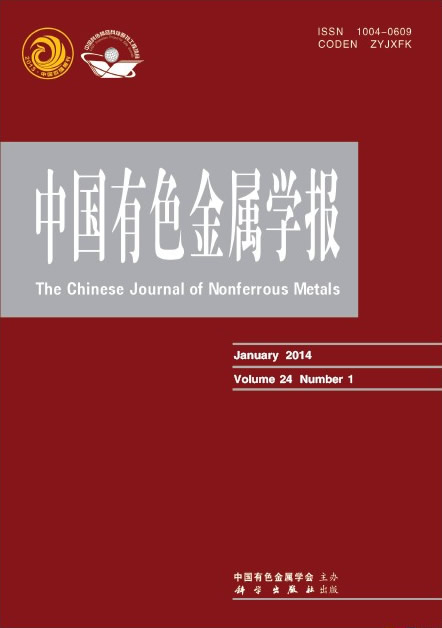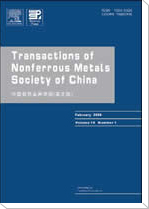(1.中南大学 材料科学与工程学院,长沙 410083;
2.苏州大学 沙钢钢铁学院,苏州 215006)
摘 要: 结合金相显微镜(OM)、电子背散射衍射技术(EBSD)等来分析Cr、Mn质量比对Al-Mg-Si合金在变形温度400~560 ℃、应变速率0.3 s-1的单轴压缩实验下的变形行为以及组织的影响。结果表明:在同一变形条件下,合金中Cr、Mn质量比越大,合金的峰值流变应力越大。在高温变形时,发生的动态软化主要为动态回复(DRV)和部分动态再结晶(DRX)。不同Cr、Mn质量比阻碍合金发生DRV/DRX的程度不同,其中0.5CrMn合金阻碍程度最大。在热变形过程中,亚晶尺寸与稳态流变应力相关,且稳态流变应力与亚晶尺寸的倒数呈线性关系。
关键字: Al-Mg-Si合金;热变形;动态回复;动态再结晶;亚晶尺寸
(1. School of Materials Science and Engineering, Central South University, Changsha 410083, China;
2. School of Iron and Steel, Soochow University, Suzhou 215006, China)
Abstract:The hot deformation behaviors and microstructural evolution of Al-Mg-Si alloys containing different mass ratio of Cr to Mn (0.1-0.5) under the uniaxial compression tests at temperature range of 400-560 ℃ and strain rate of 0.3 s-1 were investigated by optical microscopy (OM) and electron back-scattering diffractometry (EBSD). The results show that the peak flow stress increases with increasing the mass ratio of Cr to Mn under the same deformation conditions. Under the high-temperature deformation, the main softening mechanisms are dynamic recovery (DRV) and dynamic recrystallization (DRX). The extent of DRV and DRX is related to the mass ratio of Cr to Mn and the 0.5CrMn alloy shows the strongest inhibition effect. During the hot deformation, the relationship between steady-state flow stress and reciprocal subgrain size presents a good linear relationship.
Key words: Al-Mg-Si alloys; hot deformation; dynamic recovery; dynamic recrystallization; subgrain size


